Abstract
In trachealis bathed by a K+-rich, Ca2+-free physiological salt solution, calcium chloride (CaCl2) at 0.01 to 10 mmol l-1 evoked concentration-dependent spasm. Verapamil (0.1 to 10 mumol l-1) was an effective antagonist of CaCl2. Spasm evoked by acetylcholine, histamine, potassium chloride (KCl) and tetraethylammonium (TEA) was studied in trachealis bathed by normal Krebs solution. Verapamil (0.1 to 10 mumol l-1) markedly suppressed spasm evoked by KCl and TEA. In contrast the actions of acetylcholine and histamine were much less affected by verapamil. Spasm evoked by prostaglandin E2 was studied in trachealis bathed by Krebs solution containing indomethacin (2.8 mumol l-1). Verapamil (0.1 to 10 mumol l-1) had little or no effect against prostaglandin E2-induced spasm. Verapamil (0.1 to 10 mumol l-1) had relatively little effect on the tone of trachealis bathed by normal Krebs solution. In contrast bathing in Krebs solution lacking CaCl2 caused almost complete tone loss. Extracellular electrophysiological recording showed that verapamil (10 mumol l-1) suppressed not only TEA-evoked spasm but also TEA-evoked slow waves and spike potentials. Verapamil also abolished the transient period of slow wave activity associated with the spasm evoked by KCl. Intracellular electrophysiological recording showed that TEA-induced spike activity was resistant to tetrodotoxin (3 mumol l-1). However, verapamil (10 mumol l-1) abolished the tetrodotoxin-resistant spikes without increasing the resting membrane potential. It is concluded that verapamil suppresses TEA- or KCl-induced spasm, slow waves or spikes by inhibition of Ca2+ influx.(ABSTRACT TRUNCATED AT 250 WORDS)
Full text
PDF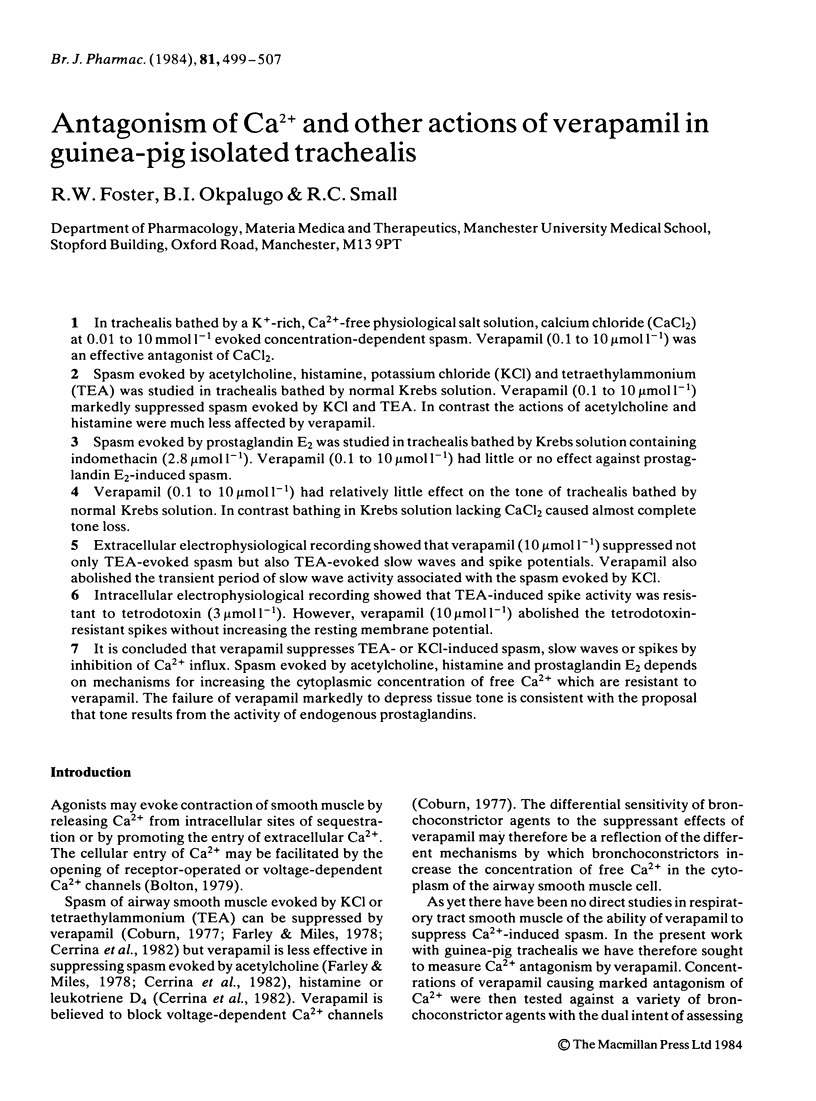
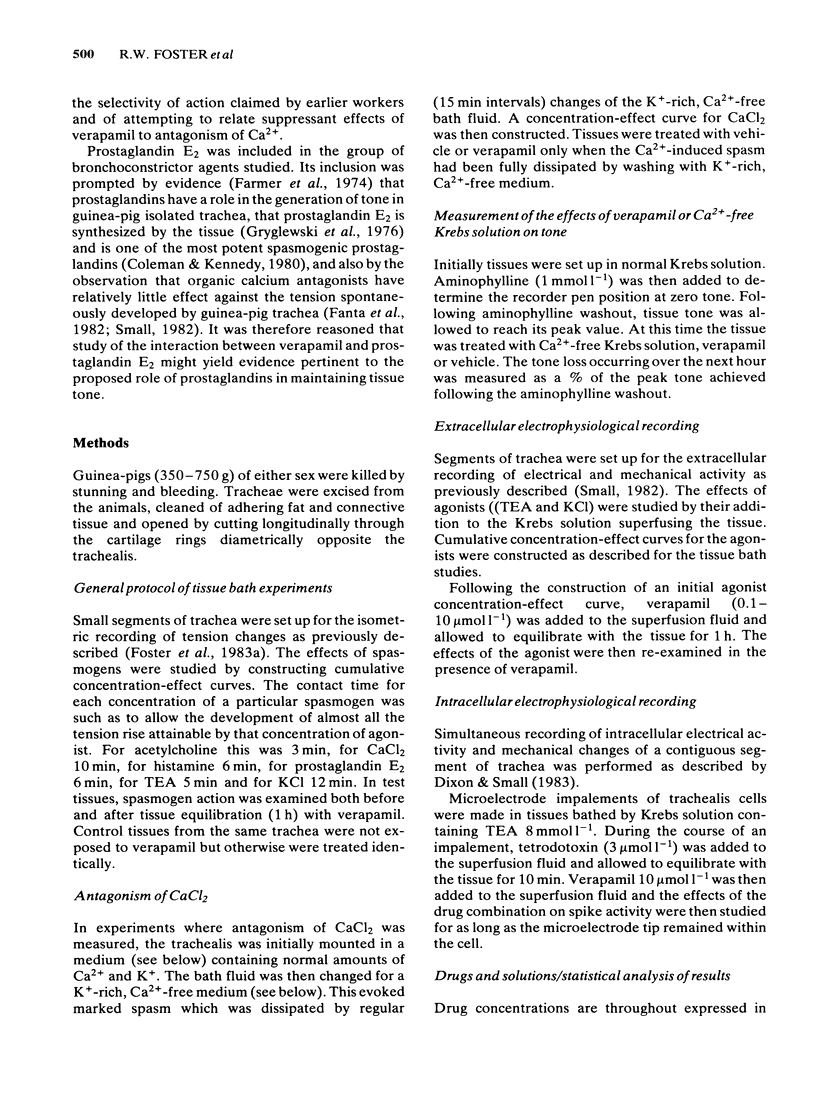
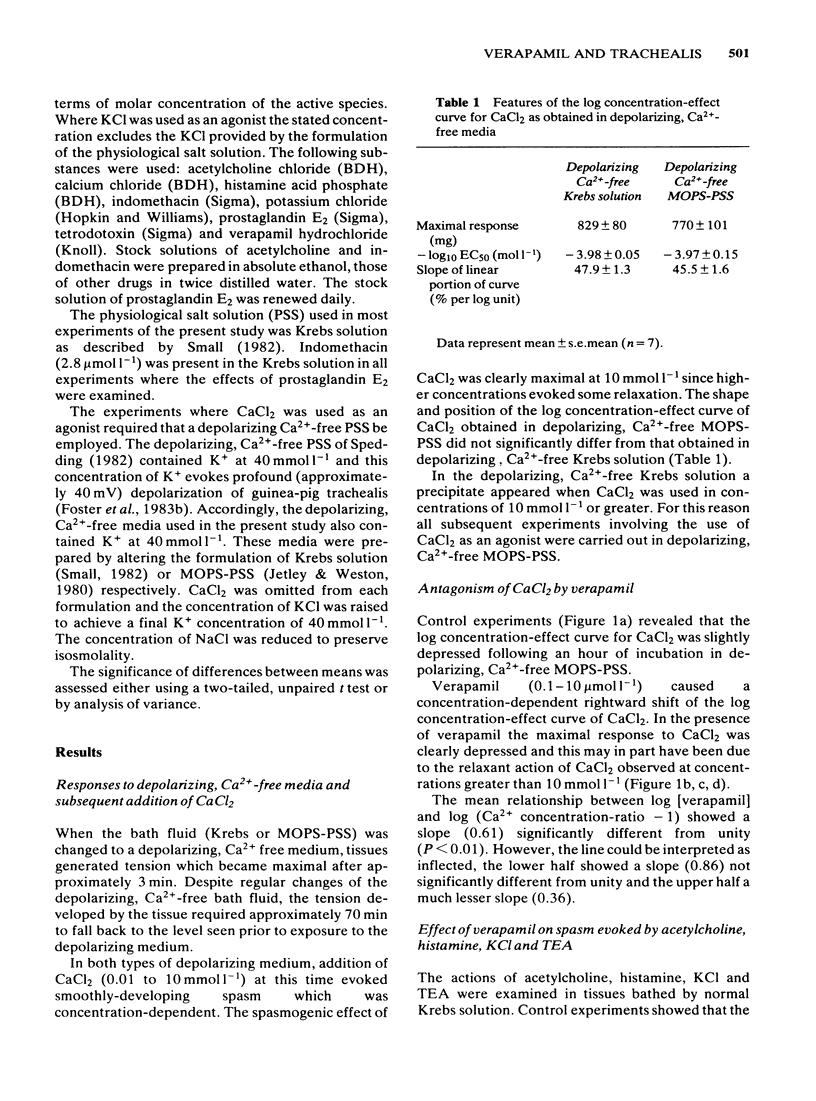
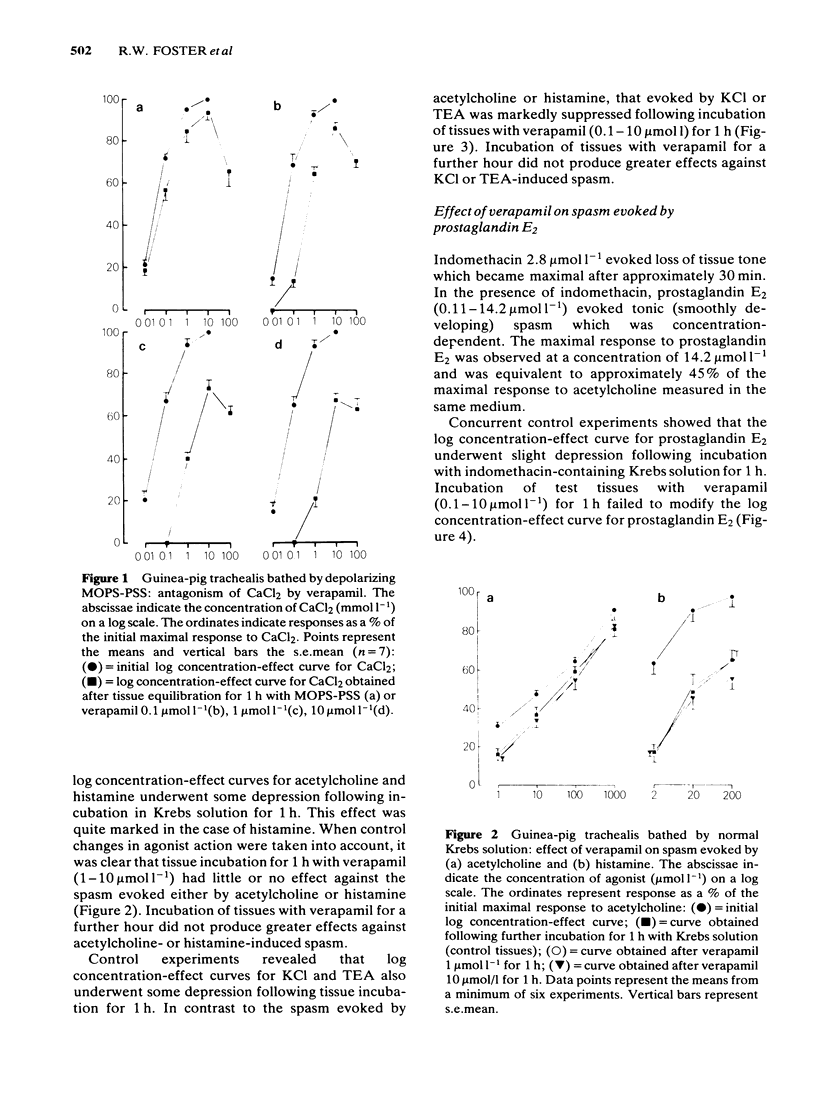
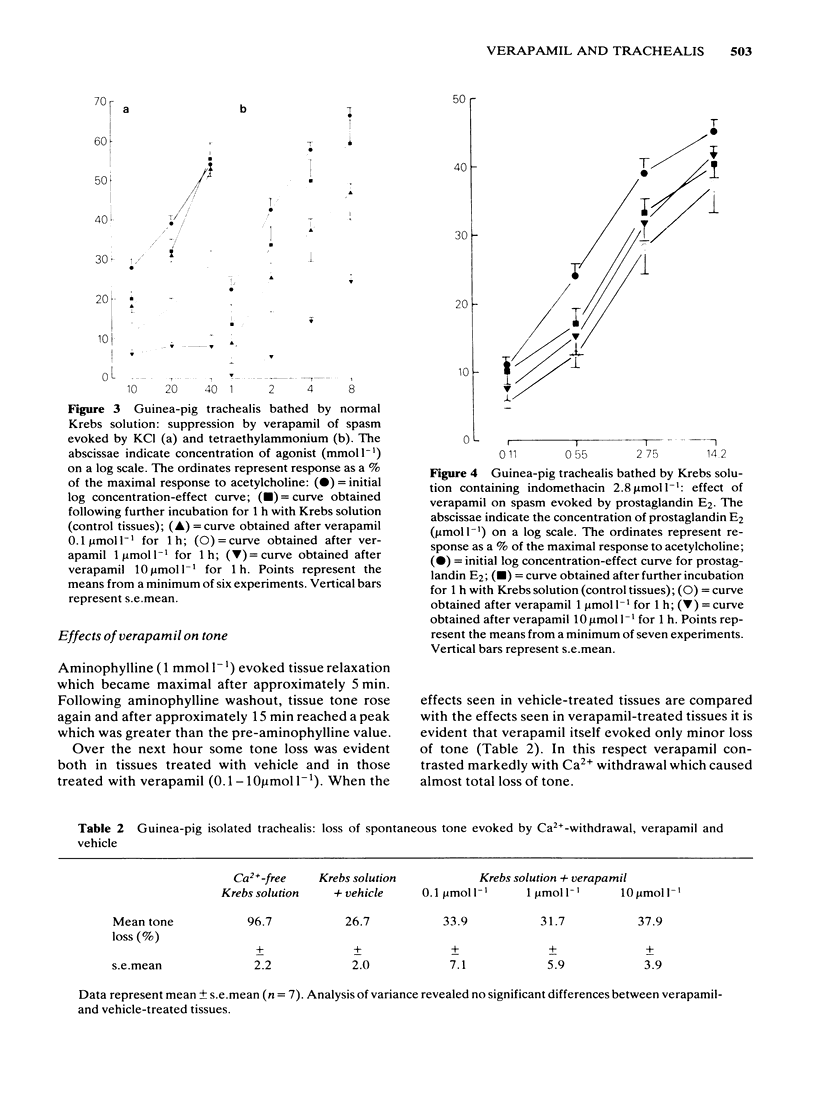
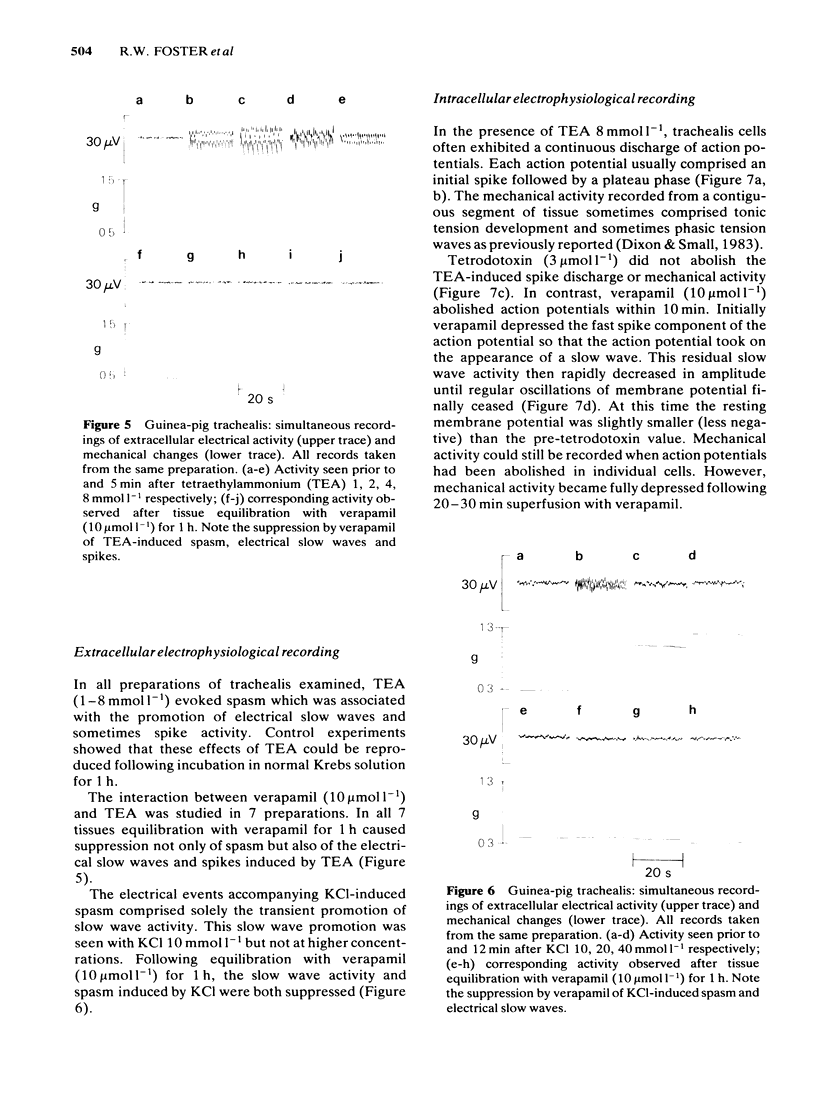
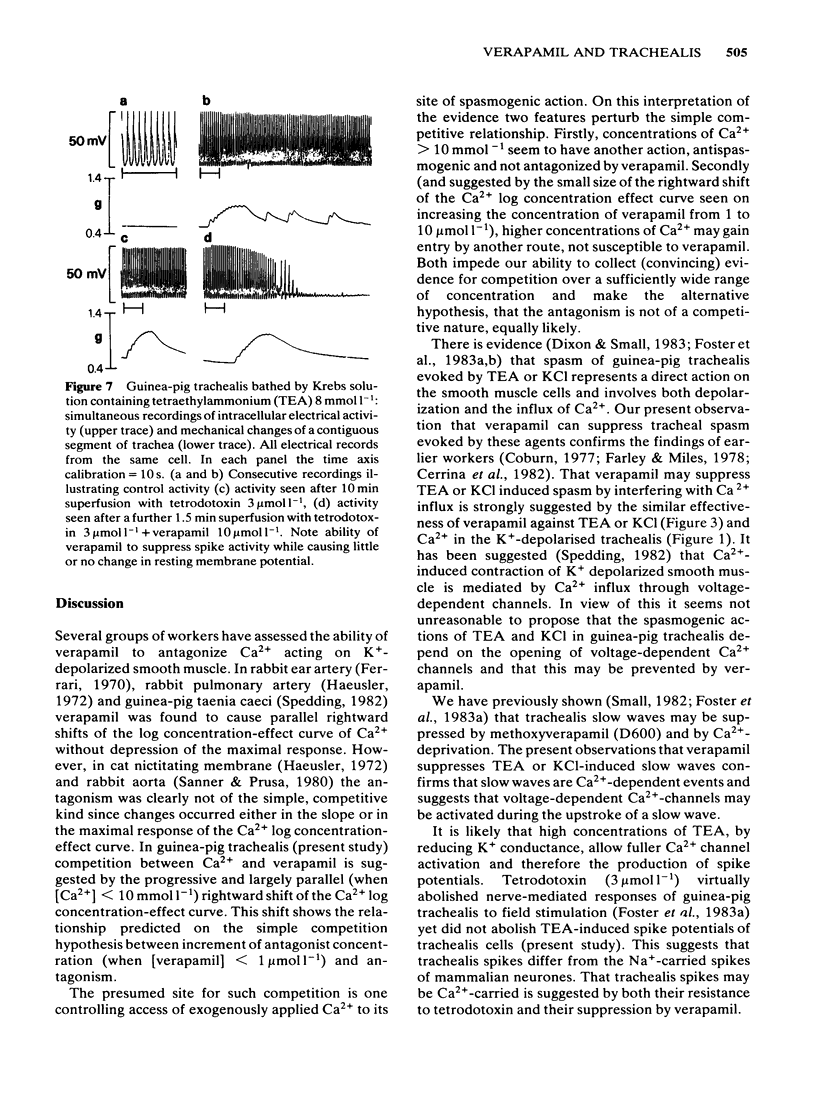
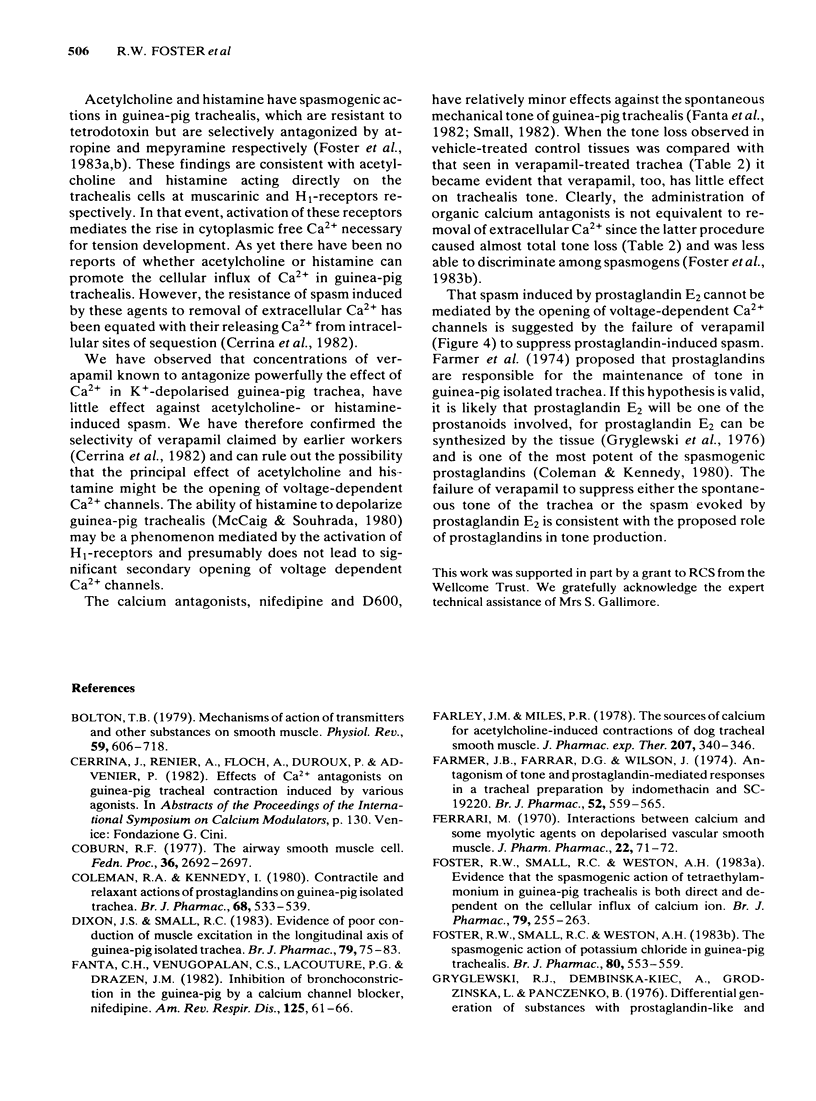
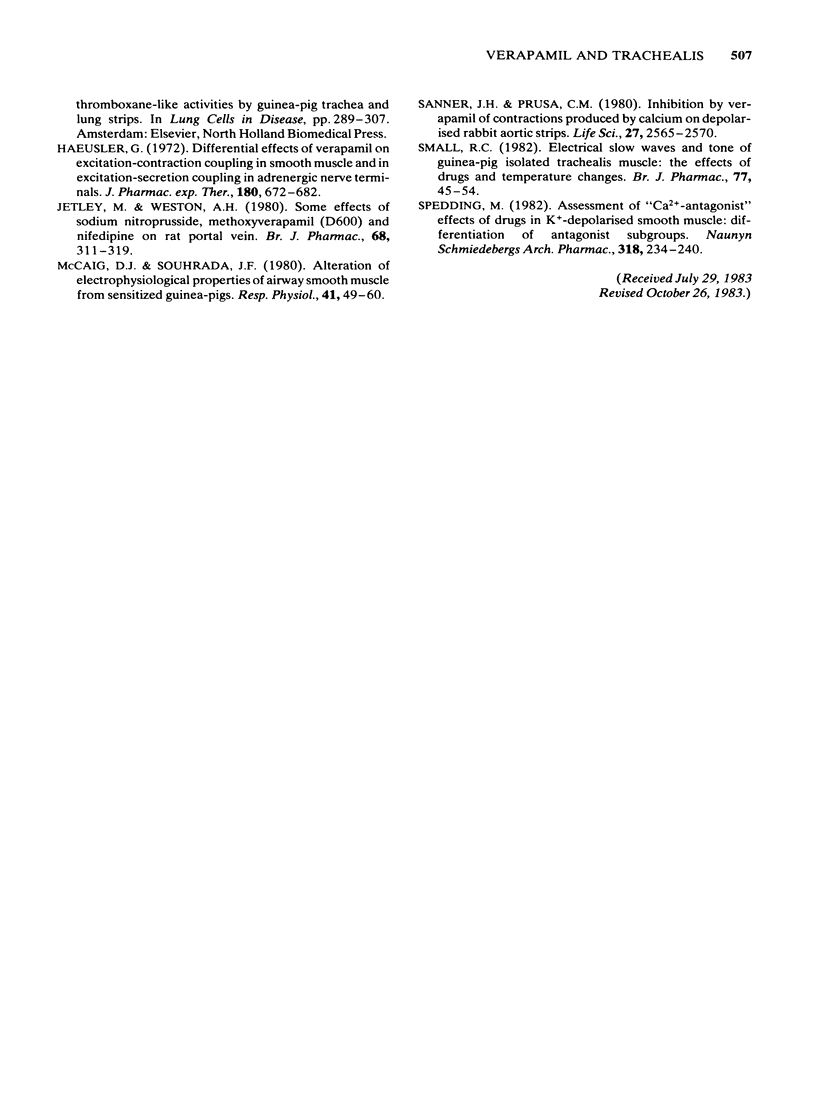
Selected References
These references are in PubMed. This may not be the complete list of references from this article.
- Bolton T. B. Mechanisms of action of transmitters and other substances on smooth muscle. Physiol Rev. 1979 Jul;59(3):606–718. doi: 10.1152/physrev.1979.59.3.606. [DOI] [PubMed] [Google Scholar]
- Coburn R. F. The airway smooth muscle cell. Fed Proc. 1977 Dec;36(13):2692–2697. [PubMed] [Google Scholar]
- Coleman R. A., Kennedy I. Contractile and relaxant actions of prostaglandins on guinea-pig isolated trachea. Br J Pharmacol. 1980 Mar;68(3):533–539. doi: 10.1111/j.1476-5381.1980.tb14569.x. [DOI] [PMC free article] [PubMed] [Google Scholar]
- Dixon J. S., Small R. C. Evidence of poor conduction of muscle excitation in the longitudinal axis of guinea-pig isolated trachea. Br J Pharmacol. 1983 May;79(1):75–83. doi: 10.1111/j.1476-5381.1983.tb10498.x. [DOI] [PMC free article] [PubMed] [Google Scholar]
- Fanta C. H., Venugopalan C. S., Lacouture P. G., Drazen J. M. Inhibition of bronchoconstriction in the guinea pig by a calcium channel blocker, nifedipine. Am Rev Respir Dis. 1982 Jan;125(1):61–66. doi: 10.1164/arrd.1982.125.1.61. [DOI] [PubMed] [Google Scholar]
- Farley J. M., Miles P. R. The sources of calcium for acetylcholine-induced contractions of dog tracheal smooth muscle. J Pharmacol Exp Ther. 1978 Nov;207(2):340–346. [PubMed] [Google Scholar]
- Farmer J. B., Farrar D. G., Wilson J. Antagonism of tone and prostaglandin-mediated responses in a tracheal preparation by indomethacin and SC-19220. Br J Pharmacol. 1974 Dec;52(4):559–565. doi: 10.1111/j.1476-5381.1974.tb09724.x. [DOI] [PMC free article] [PubMed] [Google Scholar]
- Ferrari M. Interactions between calcium and some mylotic agents on depolarized vascular smooth muscle. J Pharm Pharmacol. 1970 Jan;22(1):71–72. doi: 10.1111/j.2042-7158.1970.tb08394.x. [DOI] [PubMed] [Google Scholar]
- Foster R. W., Small R. C., Weston A. H. Evidence that the spasmogenic action of tetraethylammonium in guinea-pig trachealis is both direct and dependent on the cellular influx of calcium ion. Br J Pharmacol. 1983 May;79(1):255–263. doi: 10.1111/j.1476-5381.1983.tb10519.x. [DOI] [PMC free article] [PubMed] [Google Scholar]
- Foster R. W., Small R. C., Weston A. H. The spasmogenic action of potassium chloride in guinea-pig trachealis. Br J Pharmacol. 1983 Nov;80(3):553–559. doi: 10.1111/j.1476-5381.1983.tb10728.x. [DOI] [PMC free article] [PubMed] [Google Scholar]
- Haeusler G. Differential effect of verapamil on excitation-contraction coupling in smooth muscle and on excitation-secretion coupling in adrenergic nerve terminals. J Pharmacol Exp Ther. 1972 Mar;180(3):672–682. [PubMed] [Google Scholar]
- Jetley M., Weston A. H. Some effects of sodium nitroprusside, methoxyverapamil (D600) and nifedipine on rat portal vein. Br J Pharmacol. 1980 Feb;68(2):311–319. doi: 10.1111/j.1476-5381.1980.tb10420.x. [DOI] [PMC free article] [PubMed] [Google Scholar]
- McCaig D. J., Souhrada J. F. Alteration of electrophysiological properties of airway smooth muscle from sensitized guinea-pigs. Respir Physiol. 1980 Jul;41(1):49–60. doi: 10.1016/0034-5687(80)90022-5. [DOI] [PubMed] [Google Scholar]
- Sanner J. H., Prusa C. M. Inhibition by verapamil of contractions produced by calcium on depolarized rabbit aortic strips. Life Sci. 1980 Dec 22;27(25-26):2565–2570. doi: 10.1016/0024-3205(80)90540-8. [DOI] [PubMed] [Google Scholar]
- Small R. C. Electrical slow waves and tone of guinea-pig isolated trachealis muscle: effects of drugs and temperature changes. Br J Pharmacol. 1982 Sep;77(1):45–54. doi: 10.1111/j.1476-5381.1982.tb09267.x. [DOI] [PMC free article] [PubMed] [Google Scholar]
- Spedding M. Assessment of "Ca2+ -antagonist" effects of drugs in K+ -depolarized smooth muscle. Differentiation of antagonist subgroups. Naunyn Schmiedebergs Arch Pharmacol. 1982 Feb;318(3):234–240. doi: 10.1007/BF00500485. [DOI] [PubMed] [Google Scholar]


